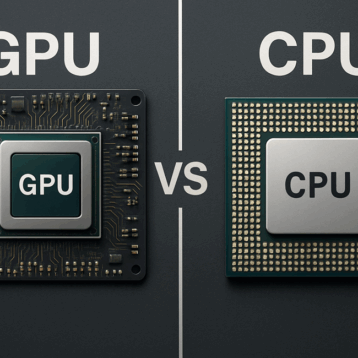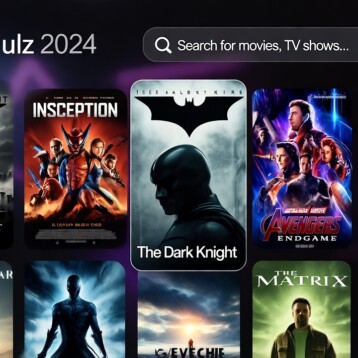
Today’s telecommunications Service Providers face a fundamental challenge: where can they discover new sources of value while reducing their existing costs for providing their traditional services.
At the same time, an intense competitive landscape, with the entrance of innovative players and emergence of new technologies has contributed to the ongoing restructuring of this industry.
Telecommunication companies haven`t been keen on change or disruptive innovation, due to the high costs involved and concerns about disturbing traditional service stability with solutions coming from outsiders, start-ups and entrepreneurs. With changing consumer preferences, the rise of new technologies, and the ever-increasing demand for secure and reliable networks to power an increasingly digitally connected world, they are now looking to embrace these disruptive technologies.
To address these challenges, service providers are looking to adopt technological disruptors such as Distributed Disaggregated Routing, AI (artificial intelligence), Blockchain, 5G and IoT / M2M.
1. Distributed Disaggregated Routing
The modern router that unlocks value for the market
Network disaggregation presents a unique opportunity for network operators to benefit from the same advantages offered by the hypercale cloud — an open solution, a choice of best-of-breed software and hardware components, and purchasing options from any vendor that supports the common operational framework.
In a distributed, disaggregated network an ODM manufacturer provides hardware built on merchant silicon while the software runs under a unified network operating system (NOS) from a third-party NOS provider.
Cloud-native architectures inherently provide support for high availability and resiliency through load balancing or fast container recovery. To reach the level of availability required by telco-grade routing, service providers also must support fast data synchronization, state recovery and data integrity, at scale.
We are already seeing global acceptance of this technology and architectures. AT&T, the largest operator in the world, is pushing for open, standardized white boxes by offering its Distributed Disaggregated Chassis (DCC) design to the OCP (Open Compute Project) community.
DriveNets, a networking software startup, supports the distributed disaggregated chassis model and enables large scale carrier-grade networking with its innovative software and networking architecture.
These platforms deliver significant CAPEX and OPEX savings for next generation Edge and Core networks, while providing the required scale and features needed for large-scale network deployment.
2. ARTIFICIAL INTELLIGENCE
AI makes it easier for network operators to enhance customer experience
Elon Musk was once asked what advice he would give to world governments, to which he replied “To implement a protocol on the development of artificial intelligence” and it is, without doubt, one of society’s most progressive advancements.
Telecommunications is one of the fastest-growing industries that uses artificial intelligence and machine learning in many aspects of their business from enhancing the customer experience to predictive maintenance to improving network reliability. Telecommunication companies now are harnessing the power of AI to process and assess vast volumes of big data to get actionable insights. This allows them to deliver better customer experience, advanced operations, and grow revenue through new products and services.
Network applications, enabled by AI, can provide intelligent network optimization, as well as enhanced network operations and maintenance with predictive analytics. Such applications are increasingly assisting service providers to manage, optimize and maintain not only infrastructure, but also their customer support operations.
3. BLOCKCHAIN
Protects our personal data and a Telco revenue opportunity
We all worry about our private data and rightly so. Blockchain is, by its very nature, a secure data structure that holds transactional records. Blockchain, which is also described as distributed-ledger technology, is decentralized, which makes it difficult to tamper with or change. With dozens of distributed-ledger projects and initiatives already in play, Blockchain adoption can make a meaningful impact on telecom revenues, costs and operational effectiveness over the next few years.
Service Providers will probably see the greatest impact of blockchain in their core management systems and in adjacent services, providing opportunities for cost reduction through process efficiency gains, and revenue growth through new value propositions.
The opportunity to create ledgers of immutable information which can register and record data without the need for a single, central authority can improve and speed up the efficiency of billing and e-transactions, as well as provide a means of reducing the operational cost of the infrastructure.
Plus, blockchain’s architecture, strengthened by cryptography, elicits trust and can give businesses a boost when it comes to privacy and security. This is an urgent requirement for today’s Service Providers given the sophistication and rate of current hacker attacks.
4. 5G
5G, good for us but a phased transition for telecoms!
Whilst the next generation (the G in 5G) is not only going to change how we connect to the internet and each other, it`s also going to change anything with a wireless connection.
Many of the technologies driving both the global economy and society, such as the Internet of Things, Industry 4.0 and Smart Healthcare, depend on adequate capacity and coverage of digital connectivity. So with 5G providing connections that will be up to 250 times faster than 4G, it will impact latency, reducing it to just one millisecond. This basically means operating in real-time, opening the door to everything from autonomous cars to a mind-altering list of other amazing things, creating a seemingly limitless opportunity for an industry now hamstrung by the smartphone market’s saturation.
Once all of 5G’s components are fully deployed and operational, you will not need any kind of wire or cable to deliver communications or even entertainment service to your mobile device, to any of your fixed devices (HDTV, security system, smart appliances), or to your automobile. 5G promises to deliver complete digital connectivity from the tip of the carrier network to the customer, without drilling another hole in the wall.
Yet for this to happen, 5G entails a set of simultaneous revolutions, all of which would have to roll out smoothly. While the long-term potential of 5G is massive, the reality is that its proliferation will likely be a phased one, with limited performance gains in the beginning.
Once complete, the 5G transition will constitute an overhaul of communications infrastructure unlike any other in history.
5. Internet of Things & Machine to Machine services
A tremendous growth opportunity for network providers.
Machine-to-machine (M2M) means the communication between devices without the intervention of a human. This is what makes many the Internet of Things (IoT) applications possible, serving as the backbone of IoT, and representing a tremendous growth opportunity for telecom operators looking to find new revenue sources. The implementation of IoT in telecom companies offers business analytics, safety at remote sites, and monitoring of equipment.
IoT uses sensors in a giant network of devices that gather and share data about how they are used and the environment in which they are operated. This allows the devices to be evaluated in real-time, and to pre-empt problems.
The degree of remote monitoring allows tower and infrastructure companies to monitor alarms and manage key performance indicators via a centralized console. In turn, this allows better overall management of critical passive infrastructure at cell sites, while freeing up IoT telecom professionals to concentrate on better network planning and resourcing.
The final challenge will be human. The burgeoning IoT market will require teams that can develop processes, platforms, and protocols that make IoT work across a wide range of industries and applications. It’s a problem that telecom service providers are well placed to solve as they look for ways to increase value, transforming our world for the better.










